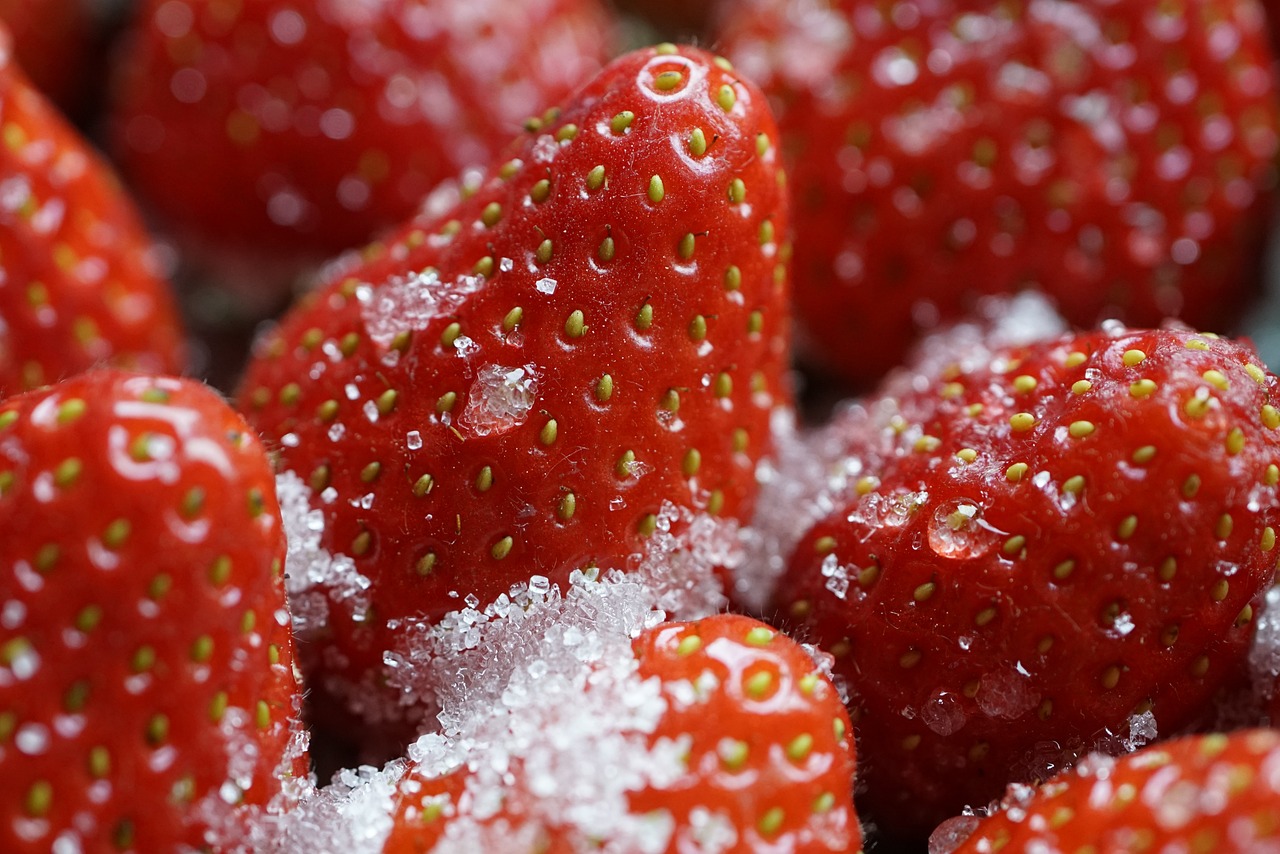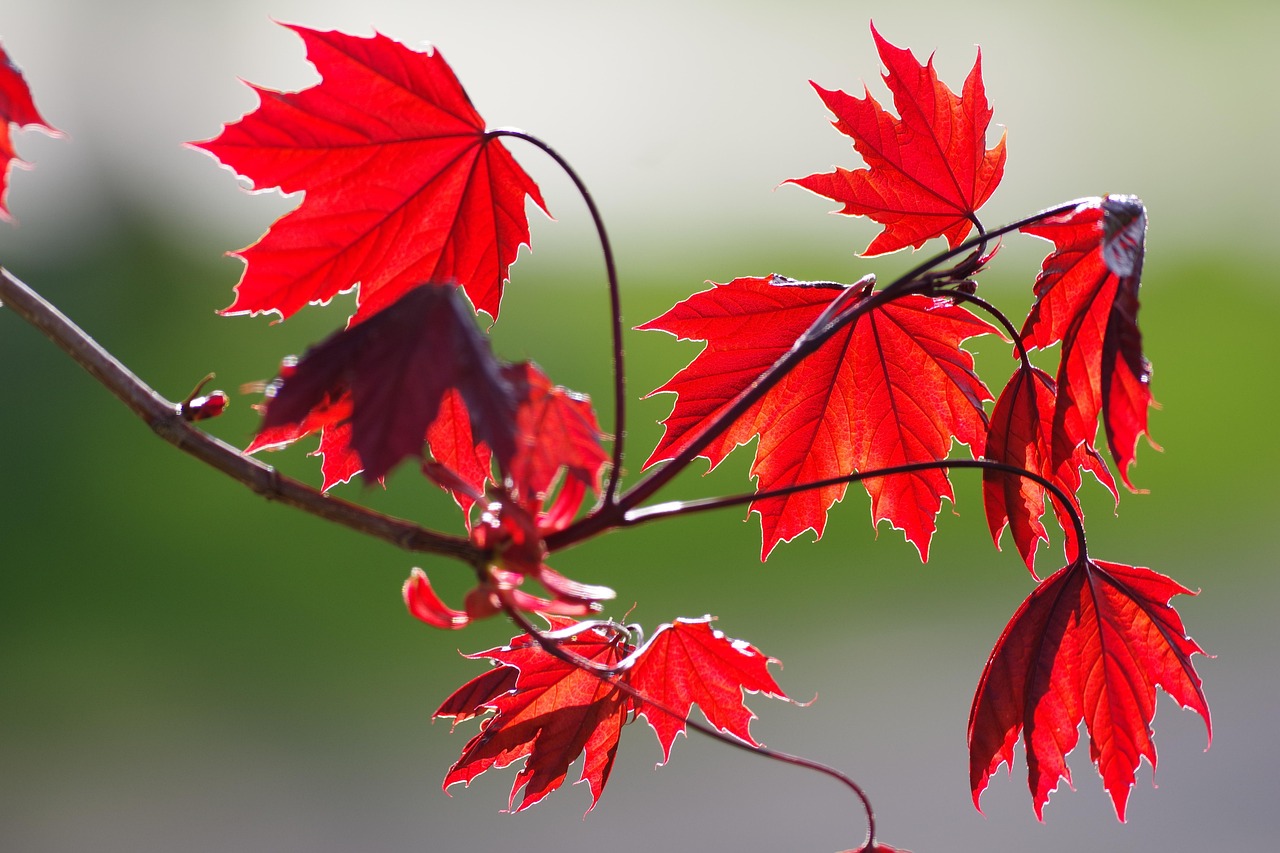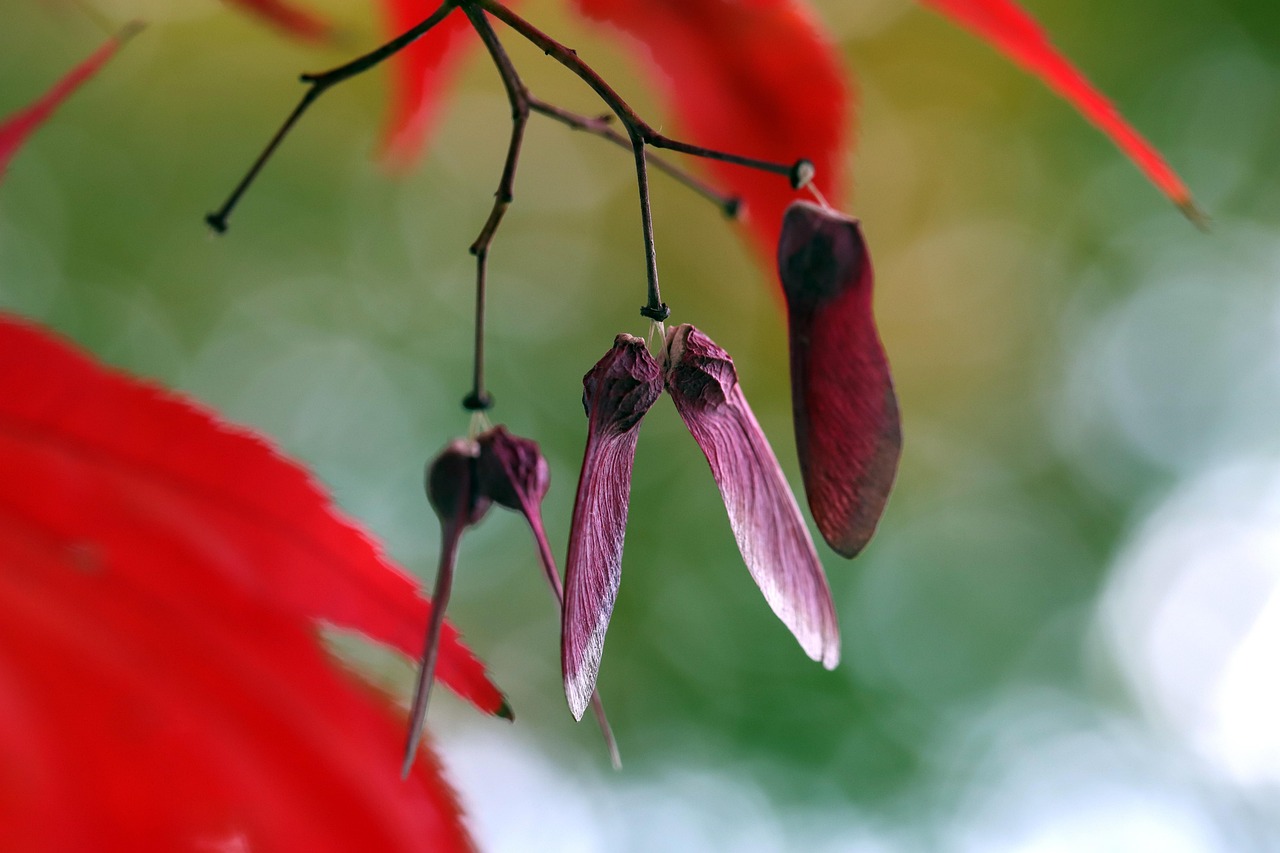Sugar maples are generally not considered highly resistant to deer damage. While they are not a primary food source for deer, they can still be browsed upon, especially in areas where other food options are limited.
Understanding Sugar Maples

The sugar maple (Acer saccharum) is a cherished tree known for its stunning fall foliage and the sweet sap it produces, which is used to make maple syrup. This tree is native to North America and thrives in a variety of soil conditions. It is particularly valued for its hardiness and beauty, making it a popular choice for landscaping and reforestation projects.
These trees can grow to heights of 60 to 75 feet and have a broad, rounded crown. Their leaves are usually five-lobed, with a smooth texture that turns vibrant shades of yellow, orange, and red in the autumn. The sugar maple also has a strong wood that is highly sought after for furniture and flooring.
Deer Behavior and Feeding Habits
Deer are known to be opportunistic feeders. Their diet primarily consists of grasses, leaves, fruits, and tender shoots. However, during certain seasons or in harsh weather conditions, they may resort to feeding on trees, including sugar maples. Understanding deer behavior can help in managing potential damage to these trees.
- Seasonal Feeding: Deer tend to browse more aggressively in winter when food is scarce.
- Preferred Species: They often favor young, tender shoots and leaves over mature trees.
- Habitat: Areas with dense vegetation provide more food options and can reduce the likelihood of deer targeting sugar maples.
Factors Influencing Deer Damage
Several factors can influence the likelihood of deer feeding on sugar maples. These include the availability of alternative food sources, the presence of other vegetation, and the overall deer population in the area. In regions where natural forage is plentiful, deer may be less likely to damage sugar maples.
Some key factors include:
| Factor | Influence on Damage |
|---|---|
| Food Availability | More food options lead to less browsing on sugar maples. |
| Tree Age | Younger trees are more susceptible due to tender bark and foliage. |
| Population Density | Higher deer populations increase the likelihood of browsing damage. |
Preventing Deer Damage
There are various strategies to help protect sugar maples from deer damage. These methods vary in effectiveness and can depend on specific conditions. Homeowners and land managers often consider the following options:
- Physical Barriers: Fencing or tree guards can prevent deer from reaching young trees.
- Repellents: Commercial deer repellents can deter deer from feeding on trees.
- Selective Planting: Surrounding sugar maples with less attractive plants may help reduce browsing.
Implementing these strategies not only protects sugar maples but also supports healthy growth and longevity for these beautiful trees in your landscape. Understanding the interaction between deer and sugar maples is vital for effective management and conservation efforts.
Understanding Deer Repellents
Deer repellents are products designed to deter deer from feeding on plants and trees. They work by utilizing various scents, tastes, or even visual deterrents that make the target area less appealing to deer. Understanding how these repellents operate can help you choose the most effective option for protecting your sugar maples.
Types of Deer Repellents
There are two main categories of deer repellents: chemical and natural. Each type has its own unique properties and methods of application.
- Chemical Repellents: These products often contain ingredients that produce strong odors or unpleasant tastes. Common active ingredients include:
- Putrescent egg solids
- Capsaicin (the active component in hot peppers)
- Rotten fish or garlic extracts
- Natural Repellents: Some individuals prefer to use homemade or organic options to deter deer. Natural repellents may include:
- Soap shavings or bars hung in trees
- Human hair or dog fur placed around the base of trees
- Essential oils, such as peppermint or lavender
Application Techniques
The effectiveness of deer repellents can depend significantly on how they are applied. Here are some tips to maximize their impact:
- Frequency of Application: Most repellents need to be reapplied after rain or heavy dew. Regular application ensures continued effectiveness.
- Coverage Area: Apply repellents to a wide area around the sugar maples, not just the trees themselves. This creates a barrier that deer may avoid.
- Seasonal Timing: Begin applying repellents in early spring when deer start to browse on new growth, and continue throughout the growing season.
Physical Barriers: Fencing Options
Physical barriers are one of the most effective long-term solutions for protecting sugar maples from deer damage. Fencing can provide a strong defense, but several factors should be considered when choosing the right type.
Types of Fencing
There are various fencing options available, each with its advantages and disadvantages:
- Wire Fencing: This is often the most cost-effective solution. A fence made of woven wire at least 8 feet tall can effectively keep deer out. However, it may require regular maintenance to ensure it remains intact.
- Electric Fencing: Electric fences deliver a mild shock, discouraging deer from crossing. They can be highly effective but require a power source and proper installation.
- Picket Fences: While aesthetically pleasing, picket fences may not be tall enough to deter deer. They can be useful for smaller areas but may need additional reinforcement.
Installation Considerations
When installing a fence, consider the following:
- Height: Ensure the fence is tall enough to prevent deer from jumping over it. A minimum height of 8 feet is recommended.
- Depth: Some deer may attempt to dig under fences. Burying the bottom of the fence or extending it underground can help prevent this.
- Aesthetics: Choose a fencing style that complements your landscape while providing the necessary protection for your sugar maples.
The Role of Landscape Design

Incorporating strategic landscape design can also reduce deer browsing on sugar maples. By creating an environment that encourages deer to explore other food sources, you can protect your trees more effectively.
Companion Planting
Planting certain companion plants around sugar maples can help deter deer. Some plants are less attractive to deer due to their scent or taste. Consider including:
- Lavender: Its strong scent repels many wildlife species, including deer.
- Marigolds: Known for their vibrant flowers, they also have a scent that deer find unappealing.
- Thyme and Sage: These herbs have strong fragrances that can help mask the scent of nearby sugar maples.
A well-planned landscape not only enhances the beauty of your property but also creates a more resilient environment against deer damage. By employing a combination of repellents, physical barriers, and thoughtful planting, you can significantly reduce the risk of damage to your sugar maples while enjoying their beauty for years to come.

Seasonal Considerations for Sugar Maples
Understanding the seasonal behavior of both sugar maples and deer is crucial for effective management. Different times of the year present unique challenges and opportunities for protecting these trees. It is important to tailor your strategies according to the season.
Spring
In spring, sugar maples begin to leaf out, making them particularly attractive to browsing deer. As new shoots and leaves emerge, they are tender and palatable, drawing deer in. During this time, consider the following measures:
- Early Application of Repellents: Apply deer repellents as soon as the new growth appears. This proactive approach can deter deer before they start browsing.
- Install Physical Barriers: If possible, erect fencing or tree guards around young trees to prevent deer from accessing the new growth.
Summer
During the summer months, the availability of food sources increases as other plants grow lush and green. This can lead to a decrease in deer pressure on sugar maples. However, it is essential to maintain protective measures:
- Monitor Deer Activity: Keep an eye on deer movements in your area. If you notice increased activity, reinforce your protective strategies.
- Maintain Companion Planting: Ensure that companion plants are thriving, as they can continue to deter deer from approaching your sugar maples.
Fall
As fall arrives, sugar maples showcase their beautiful colors. Unfortunately, this is also a time when deer may be more active due to mating seasons. The increased activity can lead to more browsing:
- Reapply Repellents: Refreshing chemical or natural repellents can help maintain their effectiveness during this critical period.
- Check Fencing: Inspect fences and barriers for any damage and make repairs to ensure they remain effective against deer.
Winter
In winter, food becomes scarce for deer. As a result, they may target sugar maples more aggressively, especially if other sources are unavailable. To protect your trees during this time:
- Use Tree Guards: Installing tree guards can provide physical protection against browsing and rubbing from deer.
- Apply Repellents: Consider using long-lasting repellents that can withstand winter conditions, as deer may be more desperate for food.
The Impact of Deer Populations on Sugar Maples
The local deer population can significantly affect the level of damage to sugar maples. Understanding the dynamics of deer populations in your area can help inform management strategies.
High Deer Populations
In regions where deer populations are high, the risk of damage to sugar maples increases. High populations can lead to:
- Aggressive Browsing: With limited food options, deer will more likely target young and vulnerable trees.
- Bark Damage: During winter, deer may strip bark from trees as they seek food, potentially harming the tree’s health.
Managing Deer Populations
While individual landowners may have limited control over local deer populations, there are steps that can be taken to mitigate their impact:
- Engaging with Local Wildlife Management: Work with local wildlife agencies to understand population dynamics and explore management options such as controlled hunting or culling.
- Community Initiatives: Participate in community discussions about wildlife management strategies that benefit both residents and local ecosystems.
The Role of Soil and Nutrition
The health of sugar maples is closely linked to soil conditions and overall tree nutrition. Healthy trees are generally more resilient to damage from browsing. Consider these factors:
Soil Quality
The quality of soil significantly impacts the growth and health of sugar maples. Here are some key aspects to consider:
- Nutrient Levels: Conduct soil tests to determine nutrient levels and amend soil as needed with organic matter or fertilizers.
- Drainage: Ensure that the planting site has good drainage to prevent root rot and other issues that weaken trees.
Watering Practices
Sufficient watering is crucial for young sugar maples, especially during dry spells. Adequate moisture helps establish strong root systems. Be mindful of:
- Consistent Watering: Water newly planted trees regularly, particularly in their first few years.
- Avoid Overwatering: Ensure that trees do not sit in waterlogged conditions, which can lead to stress and vulnerability to pests.
By paying attention to seasonal changes, managing local deer populations, and ensuring optimal soil health, you can enhance the resilience of your sugar maples against potential deer damage.
Additional Considerations for Sugar Maple Care

In addition to managing deer damage, several other factors can impact the health and longevity of sugar maples. These factors include pests, diseases, and environmental conditions that can affect overall tree vitality.
Pest Management
Like many trees, sugar maples are susceptible to various pests that can weaken their structure and make them more inviting to deer. Key pests to watch for include:
- Maple Borer: This insect can tunnel into the wood of sugar maples, causing significant damage. Regular monitoring and proper tree care can help prevent infestations.
- Scale Insects: These pests feed on tree sap, weakening the tree over time. Keeping trees healthy can reduce their attractiveness to these insects.
- Aphids: Though small, aphids can reproduce rapidly and produce a sticky substance known as honeydew, which can attract other pests like ants.
Disease Prevention
Various diseases can affect sugar maples, often exacerbated by stress from environmental conditions or pests. Some common diseases include:
- Verticillium Wilt: This fungal disease can cause leaves to wilt and die. Ensuring good soil health and proper watering can help minimize its impact.
- Leaf Spot: Various fungi can cause leaf spots, affecting the tree’s photosynthesis capabilities. Regular raking of fallen leaves can help prevent reinfection.
- Powdery Mildew: This fungal infection appears as a white coating on leaves and can be controlled through good air circulation and fungicide treatments if necessary.
Environmental Conditions
The environment plays a significant role in the health of sugar maples. Factors such as temperature fluctuations, soil quality, and moisture levels all contribute to tree well-being. To support your sugar maples:
- Mulching: Apply organic mulch around the base of the trees to retain moisture and regulate soil temperature. This practice also reduces competition from weeds.
- Sunlight Exposure: Ensure that your sugar maples receive adequate sunlight, as they thrive in full sun to partial shade. Poor light conditions can lead to weaker trees that are more vulnerable to damage.
- Temperature Extremes: Be mindful of extreme temperature changes that can stress trees. In locations with harsh winters, consider protective measures such as wrapping young trees with burlap.
Final Thoughts
Sugar maples are beautiful and valuable trees that enhance landscapes with their stunning foliage and provide economic benefits through maple syrup production. While they are not completely resistant to deer damage, understanding their vulnerabilities allows for effective management strategies. By implementing a combination of repellents, physical barriers, companion planting, and maintaining optimal soil conditions, you can significantly reduce the risk of damage to your sugar maples.
Additionally, being proactive about pest and disease management helps ensure that these trees remain healthy and vigorous. Seasonal care, including proper watering and monitoring environmental factors, plays a crucial role in the overall resilience of sugar maples against browsing by deer and other threats.
In conclusion, with thoughtful planning and regular care, you can cultivate a thriving population of sugar maples that not only withstands deer pressure but also contributes to the beauty and health of your landscape for many years to come.
